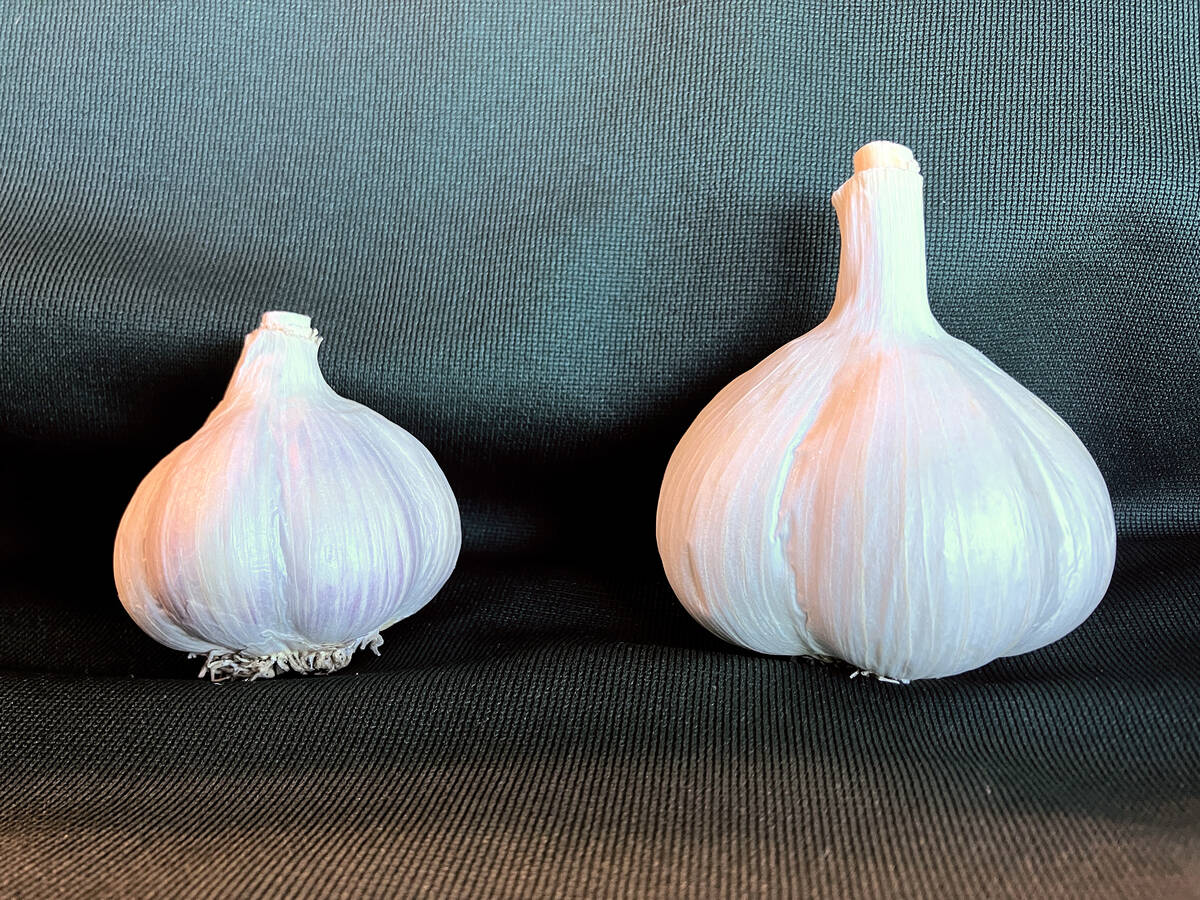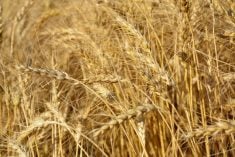Humid and wet weather this spring has created ideal conditions for fusarium head blight development in wheat.
The risk of fusarium is heavily dependent on the weather and stage of crop. High moisture nd temperatures around 20 to 25 degrees Celsius just before and during heading, is ideal for fusarium growth.
Why it matters: Fusarium-infected wheat will decrease the grade of the crop at the elevator, and therefore, the grain price.
Read Also

Clean seed garlic promises bigger bulbs and higher returns for growers
Ontario garlic trials show clean seed outshines conventional yields, with stronger drought resilience, reduced virus risk and greater economic outcomes.
“I think the potential is there, it’s been humid and wet. Our saving grace might have been the couple of over 30-degree Celsius days we had,” says Cathleen Boekhoven, crop sales specialist with Agris Co-operative.
At harvest, adjustments in combine fan speed can help move out the light, infected kernels and can lower the volume of infected kernels in a sample. Other strategies include combining fusarium-infected fields last and blending that grain with clean wheat to lower the overall level of fusarium-infected kernels, if the infection rate is low. Rejected wheat can be marketed as feed for some types of livestock, as long as the fuarium levels aren’t too high.
Planting into infected hosts such as crop debris or residue of small grain or corn also increases the chances of infection.
“Spores are carried from infected crop residue by wind or rain and splashed onto the wheat head. Rainfall or heavy dew during this period then causes the spores to germinate and infect florets on the wheat head. Wheat fields planted after corn or wheat, or those planted with a susceptible variety, are at most risk,” says Sophie Krolikowski, cereals specialist with OMAFRA.
Heavily fusarium-infected wheat will receive a lower grade at the elevator and therefore, a discount on the grain price.
“Looking at the Great Lakes Grain wheat discounts from last year, it can cost you a discount anywhere from $10 to $65 a tonne, depending on severity,” says Boekhoven.
As well, fusarium brings the potential risk of deoxynivalenol (DON), which in itself has various toxicological effects associated with contamination.
Fusarium can be identified in the field by thoroughly looking at wheat heads a few weeks before harvest.
It shows through as tan or light brown lesions on the head, with shrunken kernels that are light in weight.
Fusarium head blight cannot be treated, but a T-3 fungicide application applied at the correct time and with the correct method using front and back nozzles and a high-water rate as coverage is of utmost importance and can help reduce intensity.
“A T-3 fungicide isn’t new. There’s lots of great research, small trials, large field trials, that on average, it’s just over eight bushels that you get a response. Even of that data set, 50 per cent is in between 5.5 and 11 bushels. With that rate of return, it’s a no brainer then,” says Boekhoven.
- [READ MORE] UV light holds grain decontamination potential
“For nozzle setups, a coarse droplet will give you better coverage. Nozzles with a shallow attack angle, such as forward-and-back double nozzles and alternating turbo floodjets, have significantly better spray coverage of wheat heads than nozzles that spray straight down,” says Krolikowski.
Crop rotation, stubble management and variety selection can help to control fusarium in the future wheat crops.
Diversity in crop rotation allows time for crop residues and pathogens that survive to break down, reducing the risk to subsequent susceptible crops.
Effective straw chopping and chaff spreading will encourage the decomposition of the residue, and wheat varieties that are less susceptible to fusarium head blight are ideal.















